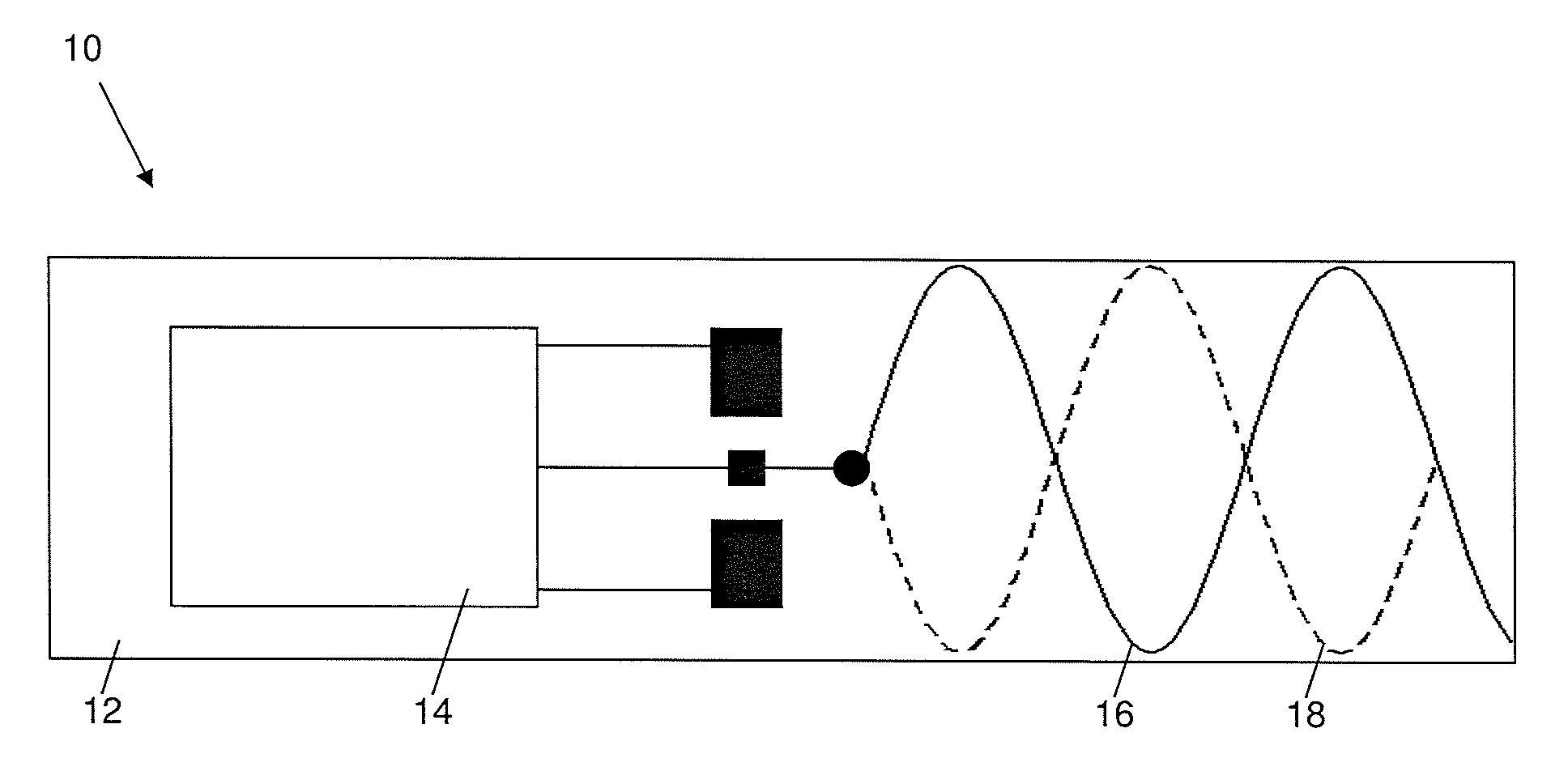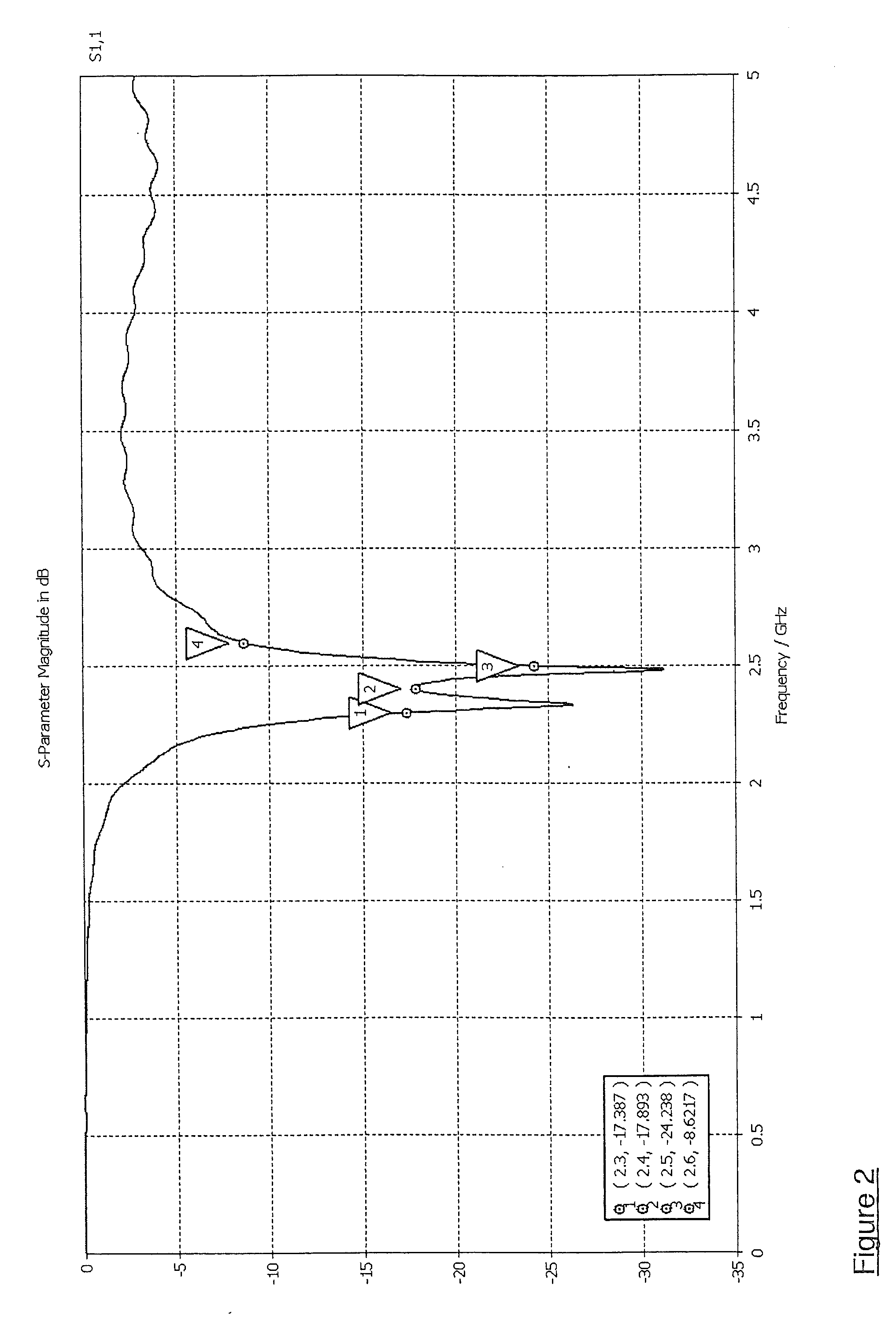Antenna
- Summary
- Abstract
- Description
- Claims
- Application Information
AI Technical Summary
Benefits of technology
Problems solved by technology
Method used
Image
Examples
Embodiment Construction
Referring first to FIG. 1, a wireless subsystem module for use in a device such as a mobile telephone or a laptop computer is shown generally at 10. The wireless subsystem module 10 is mounted on a substrate 12 of a material such as fibreglass, for example FR4, which supports a plurality (for example four) of circuit layers, one of which is at ground or 0 volts potential and is referred to as a “ground plane”.
One or more integrated circuits 14 containing transmit and receive circuits is mounted on the substrate 12 and is connected by tracks printed or otherwise provided on the layers of the substrate 12 to a number of discrete components such as filters, resistors, capacitors and inductors which perform functions such as impedance matching of the transmit and receive circuits to an antenna of the wireless subsystem module 10. The structure and operation of these components will not be described in detail here, since they are not the focus of the present invention.
The wireless subsys...
PUM
 Login to View More
Login to View More Abstract
Description
Claims
Application Information
 Login to View More
Login to View More - R&D
- Intellectual Property
- Life Sciences
- Materials
- Tech Scout
- Unparalleled Data Quality
- Higher Quality Content
- 60% Fewer Hallucinations
Browse by: Latest US Patents, China's latest patents, Technical Efficacy Thesaurus, Application Domain, Technology Topic, Popular Technical Reports.
© 2025 PatSnap. All rights reserved.Legal|Privacy policy|Modern Slavery Act Transparency Statement|Sitemap|About US| Contact US: help@patsnap.com



